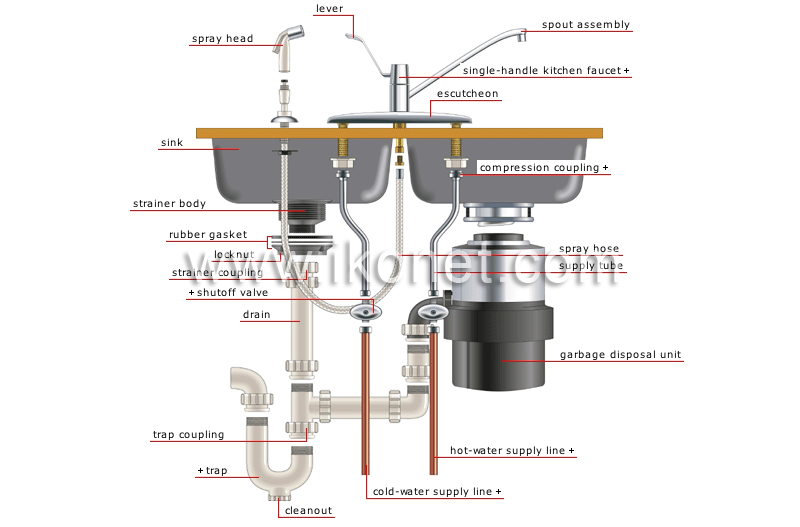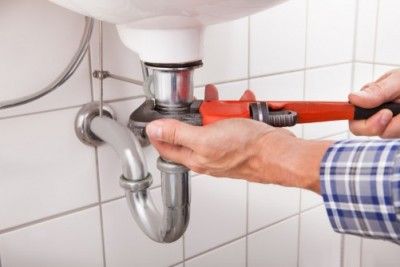What are your beliefs on Plumbing Installation 101: All You Need to Know?

Comprehending how your home's pipes system functions is essential for every single house owner. From providing clean water for alcohol consumption, food preparation, and bathing to securely eliminating wastewater, a well-kept plumbing system is vital for your household's health and convenience. In this thorough overview, we'll explore the detailed network that comprises your home's plumbing and deal pointers on upkeep, upgrades, and handling typical issues.
Intro
Your home's plumbing system is greater than just a network of pipelines; it's a complicated system that guarantees you have access to tidy water and effective wastewater removal. Knowing its parts and how they interact can aid you stop costly repair services and ensure every little thing runs smoothly.
Standard Components of a Pipes System
Pipes and Tubes
At the heart of your plumbing system are the pipes and tubes that bring water throughout your home. These can be made from various materials such as copper, PVC, or PEX, each with its benefits in regards to resilience and cost-effectiveness.
Fixtures: Sinks, Toilets, Showers, and so on.
Fixtures like sinks, toilets, showers, and tubs are where water is utilized in your house. Understanding how these fixtures link to the pipes system aids in diagnosing problems and preparing upgrades.
Shutoffs and Shut-off Factors
Valves manage the flow of water in your pipes system. Shut-off shutoffs are critical throughout emergency situations or when you require to make repairs, allowing you to isolate parts of the system without interrupting water circulation to the whole house.
Water Supply System
Main Water Line
The primary water line attaches your home to the local water or a private well. It's where water enters your home and is distributed to numerous components.
Water Meter and Pressure Regulator
The water meter procedures your water use, while a stress regulator ensures that water flows at a risk-free stress throughout your home's plumbing system, stopping damages to pipelines and components.
Cold Water vs. Warm water Lines
Recognizing the distinction between cold water lines, which provide water straight from the main, and hot water lines, which bring heated water from the hot water heater, aids in repairing and preparing for upgrades.
Drainage System
Drain Pipes Piping and Traps
Drain pipelines carry wastewater far from sinks, showers, and commodes to the sewage system or septic tank. Catches protect against sewage system gases from entering your home and additionally catch debris that could cause clogs.
Ventilation Pipes
Ventilation pipelines permit air right into the water drainage system, avoiding suction that might slow down drain and trigger traps to empty. Appropriate ventilation is vital for preserving the stability of your plumbing system.
Value of Appropriate Drain
Making certain correct water drainage protects against back-ups and water damages. Regularly cleaning drains and maintaining traps can protect against expensive repair work and prolong the life of your pipes system.
Water Heater
Kinds Of Water Heaters
Water heaters can be tankless or conventional tank-style. Tankless heaters warmth water as needed, while tanks keep heated water for immediate usage.
Updating Your Plumbing System
Factors for Updating
Upgrading to water-efficient fixtures or changing old pipes can improve water quality, minimize water expenses, and increase the worth of your home.
Modern Pipes Technologies and Their Benefits
Discover modern technologies like wise leak detectors, water-saving toilets, and energy-efficient hot water heater that can save money and reduce ecological effect.
Cost Factors To Consider and ROI
Determine the upfront prices versus long-lasting cost savings when considering plumbing upgrades. Many upgrades pay for themselves via minimized utility bills and fewer fixings.
Just How Water Heaters Link to the Pipes System
Understanding exactly how hot water heater link to both the cold water supply and warm water circulation lines aids in identifying issues like not enough hot water or leakages.
Maintenance Tips for Water Heaters
Frequently purging your hot water heater to remove sediment, examining the temperature level settings, and evaluating for leaks can prolong its life-span and enhance power efficiency.
Typical Plumbing Problems
Leaks and Their Reasons
Leaks can happen due to maturing pipelines, loose installations, or high water pressure. Resolving leakages immediately protects against water damage and mold and mildew development.
Clogs and Blockages
Blockages in drains pipes and commodes are frequently triggered by purging non-flushable things or a buildup of grease and hair. Utilizing drainpipe displays and bearing in mind what drops your drains pipes can stop clogs.
Indications of Pipes Problems to Look For
Low water stress, slow drains, foul odors, or unusually high water expenses are signs of prospective pipes problems that ought to be attended to promptly.
Plumbing Maintenance Tips
Routine Assessments and Checks
Set up annual plumbing assessments to capture problems early. Try to find indicators of leakages, deterioration, or mineral build-up in taps and showerheads.
Do It Yourself Upkeep Tasks
Straightforward jobs like cleansing tap aerators, checking for bathroom leakages utilizing dye tablets, or protecting subjected pipes in cold climates can avoid major plumbing issues.
When to Call a Professional Plumbing Professional
Know when a pipes issue calls for specialist know-how. Trying intricate repairs without proper knowledge can result in more damage and higher repair work expenses.
Tips for Minimizing Water Use
Basic routines like dealing with leakages without delay, taking shorter showers, and running complete lots of washing and recipes can preserve water and reduced your energy expenses.
Eco-Friendly Pipes Options
Think about sustainable plumbing materials like bamboo for floor covering, which is durable and eco-friendly, or recycled glass for countertops.
Emergency situation Readiness
Steps to Take During a Plumbing Emergency situation
Know where your shut-off valves are located and how to turn off the water supply in case of a ruptured pipeline or major leak.
Importance of Having Emergency Calls Convenient
Maintain get in touch with info for neighborhood plumbing professionals or emergency services conveniently offered for fast reaction during a pipes situation.
Ecological Impact and Conservation
Water-Saving Components and Home Appliances
Setting up low-flow faucets, showerheads, and commodes can dramatically minimize water use without sacrificing efficiency.
Do It Yourself Emergency Fixes (When Applicable).
Short-lived fixes like using air duct tape to patch a leaking pipeline or putting a bucket under a trickling faucet can minimize damages up until a professional plumbing gets here.
Verdict.
Comprehending the makeup of your home's plumbing system encourages you to preserve it effectively, conserving time and money on fixings. By complying with regular upkeep routines and remaining notified concerning modern-day pipes technologies, you can guarantee your pipes system operates successfully for years ahead.
HOW YOUR PLUMBING SYSTEM WORKS
Which Pipes Do What?
Blue lines = fresh water supply entering the building Red lines = hot water supply entering the building Grey lines = pipes carrying waste away from the building and venting pipes carrying gases away from the building (through the roof) YOUR MAIN PLUMBING SYSTEMS
There are two main plumbing systems that support your home s basic plumbing needs one that brings clean water into your home, and one that sends dirty water away from your home. Connected to the toilet, bath, shower, and other faucets in your home, these two systems keep your water flowing in the right directions.
ACCESSING FRESH WATER
Fresh and clean water is brought into your home through the main water supply line . Filtered through one pipe, this water is pressured to flow into the various fixtures in your home at any given time.
This water can be sourced from a well located on your property, a pond or river (mostly cottages), or, as in most cases, from the city s municipal water treatment centre. However, it is important to note that water that is untreated, such as the water siphoned from ponds or rivers, may not be safe to drink. Personal water supplies always need to be treated for hardness and contaminants before consumed.
MUNICIPAL WATER SUPPLIES
Improve taste and odour Remove sediment Eliminate hardness Reduce chlorine COLD WATER SUPPLY VS. HOT WATER SUPPLY
Cold water flows into your home or building through the service line, which then distributes hot or cold water to your fixtures. This line is most commonly run through a central column that runs floor to floor. Hot water runs in short and straight pipes as the longer the pipeline, the more heat that will be lost in the transfer. Having shorter pipes also allows residents to access hot water more quickly.
WASTE WATER SYSTEM
Your wastewater system is divided into two parts pipes that send wastewater away from your home and venting pipes that send sewer gas away from your home. Sewage water travels through pipes that flush the water and waste towards local sewers that are operated and managed by your city or town. Most sewer systems rely on gravity to move the wastewater to where it needs to go.
The further away from your toilet or sink, the larger wastewater pipes become. This allows for waste to be disposed of from various parts of your home or business at once without pipe blockages. The angle and flow of these pipes are also essential for keeping your waste pipes clear of build up.
https://harrisplumbing.ca/how-your-home-plumbing-system-works/

We were made aware of that editorial about Anatomy of a House: Understanding the Components from an associate on our other web address. Loved our blog? Please share it. Help others locate it. I treasure your readership.
Go Company